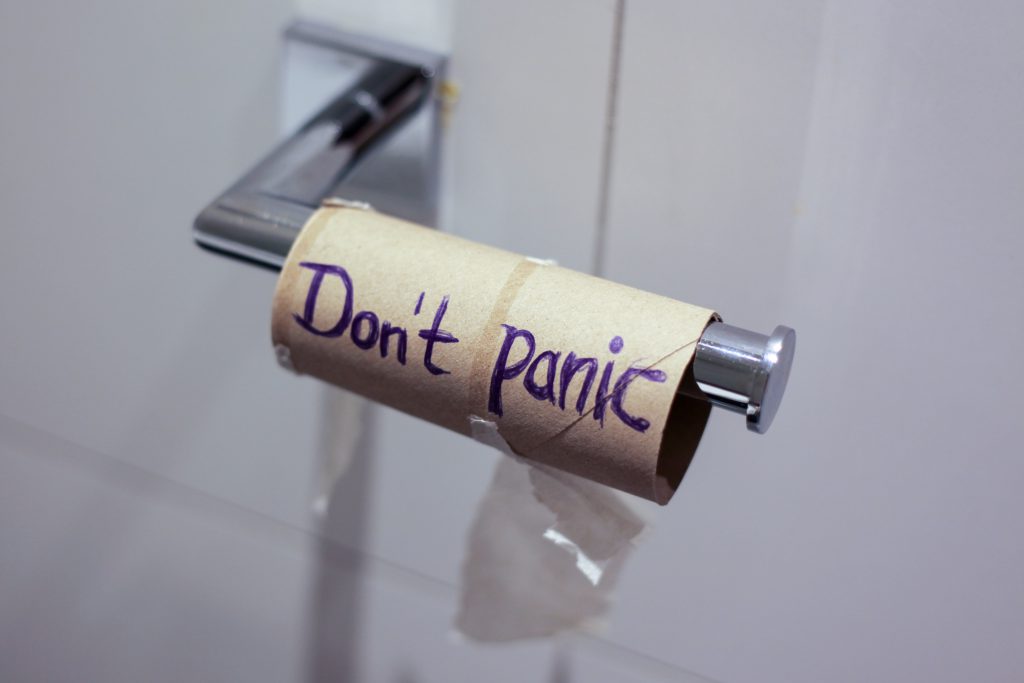
Intestinal blockages, also called bowel obstructions, are a fairly common complication ostomates face at some point or another. So, I wanted to talk a little bit about why they happen and what you should do if and when they happen.
Why might ostomates experience bowel obstruction?
There are a couple of reasons that these blockages can occur, such as undigested food, active inflammation, or strictures (narrowings). Strictures are often caused by adhesions, which is like a scar tissue that sticks the intestine to nearby organs, or to itself. These adhesions are often the result of surgery, but they can also be due to diseases, such as Crohn’s disease and ulcerative colitis.
Avoiding bowel obstructions
Measures to avoid blockages should be a way of life for an ostomate; eating little and often, staying hydrated, and chewing slowly and thoroughly can all help prevent a bowel obstruction from happening.
The difference between a complete and partial bowel obstruction
A complete obstruction results in no output at all. It’s also possible to have a partial obstruction, which will usually mean that you’re only able to pass small amounts of loose stool, as it’s difficult for the more solid waste to get past the blockage.
Symptoms of a bowel obstruction
People with an ileostomy tend to experience the onset of symptoms quite rapidly, whilst those with a colostomy often decline a little more gradually. The symptoms to be aware of are usually the same, and these include:
- Abdominal cramps – you can sometimes pinpoint where the blockage is, because the pain is worse in that area
- No stoma output, or watery output if the blockage is a partial one
- Abdominal distension (bloating and swelling)
- A swollen stoma
- Nausea and/or vomiting
- Dehydration
Things to try at home
You may ultimately need to go to the hospital, but there are some things that you can try at home first:
- Stop eating solid food immediately.
- If your stoma is swollen, put on a fresh ostomy bag with a larger hole.
- Stay hydrated. A warm drink may help stimulate and relax the intestine. A fizzy drink may help push the blockage along. Oral rehydration solution can help you stay hydrated without the need to drink copious amounts.
- Lay in the bath for 15- 20 minutes. The warm water may help relax your abdominal muscles.
- Massage your abdomen. If you can tell where the blockage is, concentrate your attention there. Some people prefer circular motions using the fingertips, and others prefer a rolling motion from one side to the other using the fist. Do whichever is the most comfortable! You may even want to do this whilst you’re in the bath.
- A position which may help move things along is lying on your back. Pull your knees up to your chest and then roll from side to side for a couple of minutes.
Some or all of these things might help you. I’d love to give you a few tips that will work every time, and quickly, but it’s all trial and error unfortunately, and what works for one may not work for another.
I know avoiding a trip to the hospital is always preferable, but if you have tried everything you can at home then you should be thinking about going. It’s recommended that you wait no longer than 2 hours (if you have a colostomy) or 6 hours (if you have an ileostomy). I’ve seen different time recommendations, and this is the least number of hours. Personally, I think it’s best to err on the side of caution. The hospital can treat dehydration much easier, and there is a very real possibility of bowel rupture if you leave it for too long.
My experience of bowel obstructions
For me, the symptoms always seem to come in the same order, so I usually notice the lack of output before anything else. Then, I get intense abdominal cramps at the blockage site. There are two areas for me: behind my stoma and my lower right abdomen. This is then followed by abdominal distension, a swollen stoma, and finally, vomiting. The vomiting can be distressing, especially if the food has made it so far through the intestine that it’s started to be “processed” before coming back up. This is called faecal vomiting. I know me saying “don’t worry” is easier said than done, but it is fairly normal in this circumstance.
Dehydration can quickly become a problem, so staying hydrated is always high up on my list of priorities. I try to sip oral rehydration solution, in the hope that some of it gets absorbed. I take a warm bath and massage abdomen.
Personally, I find that fizzy drinks make me feel worse, but I tend to suffer with trapped wind if I have anything carbonated anyway. Instead, the gas gets stuck in my intestine along with the stool, which makes the cramps and distension worse. That said, I have seen posts from many ostomates who do this first, because it tends to be the trick which works for them the fastest!
My abdomen and intestine often feel sore or particularly sensitive for up to a week post blockage, so I eat softer, more easily digestible foods while my intestine recovers from its ordeal!
If you have some of your own tips to share, I would be interested to hear them! Find us on Twitter – @FittleworthMed @Sahara88uk
If you’d like to find out more, visit our advice page on common stoma problems.
We hope you enjoyed this article from our guest blogger. They are expressing their views or knowledge on a topic because of their experience & background. Some of the opinions expressed may not reflect the views of Fittleworth or your NHS professional.
It goes without saying, but this is not clinical advice. Each person will have an individual set of medical factors to consider. So please do not to make significant changes to your diet, exercise or treatments before consulting with a NHS professional.
Sahara was admitted to hospital and diagnosed with Ulcerative Colitis at the age of 19,  after just two weeks of being incredibly unwell.
after just two weeks of being incredibly unwell.
One week later, she had emergency surgery to remove her colon and rectum, and had her first ileostomy. A turbulent journey followed; a multitude of treatments, complications, seven surgeries, a failed J-Pouch, and three ileostomies later, she is living with a permanent stoma and is a pro-active IBD and ostomy advocate.
Sahara joined the online IBD and ostomy community in 2014, and it very quickly became apparent to her that whilst awareness is important, even more important than that is providing support to others as they navigate the stormy waters of life with IBD, or an ostomy.
She runs #IBDSuperHeroes fundraising and awareness campaign, and the Facebook support group. She is a blogger for InflammatortyBowelDisease.net and an IBD Patient Consultant for merakoi – bridging the gap between patients and healthcare. She gets involved with research whenever she can, and is a volunteer for Cure Crohn’s Colitis, where she donates her time and expertise in social media marketing and content creation.

